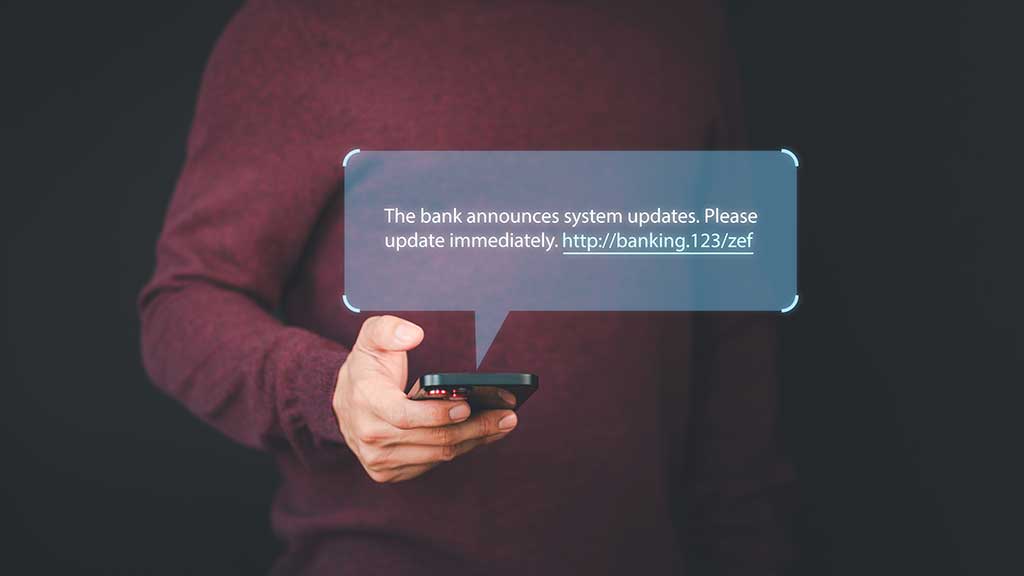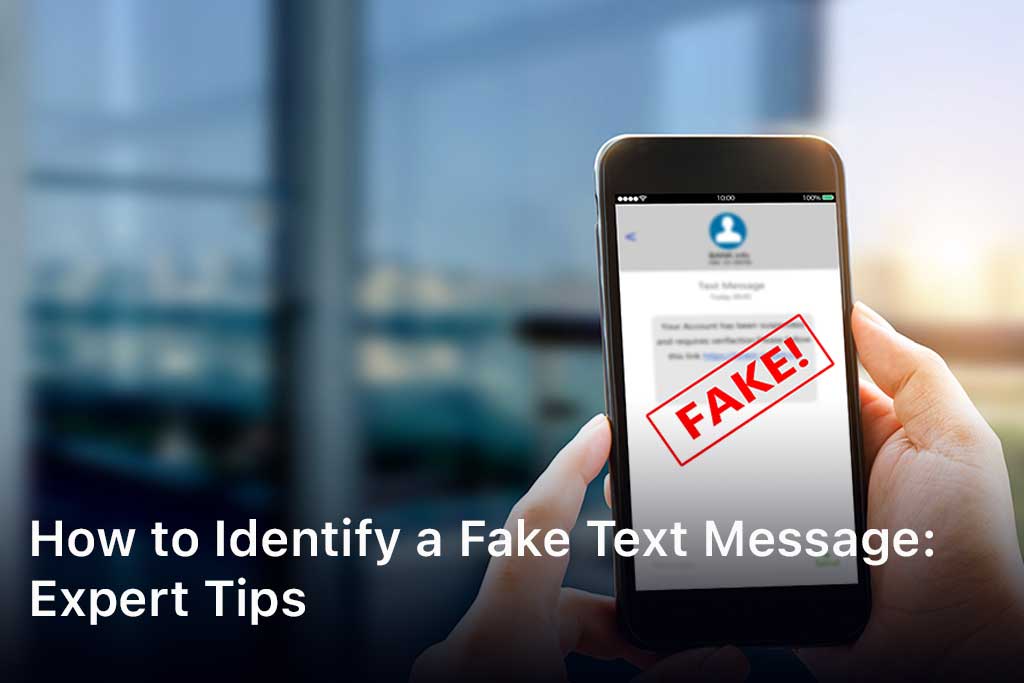Learn how to identify a fake text message with these expert tips. Protect yourself from scams by understanding the signs and taking the right precautions.
In today’s digital age, text messaging has become a convenient way to communicate quickly and efficiently. However, with this convenience comes the risk of receiving fake text messages designed to deceive and scam you.
Knowing how to identify a fake text message is crucial in protecting yourself from potential harm. This article provides comprehensive guidelines and expert tips on how to spot and avoid falling victim to these fraudulent messages.
Table of Contents
ToggleWhat’s Considered a Fake Text Message?
A fake text message is one that is sent with malicious intent, typically to deceive the recipient into providing personal information, clicking on a harmful link, or taking some other action that benefits the sender at the recipient’s expense. These messages often impersonate legitimate organizations, companies, or individuals, making them appear trustworthy.
Fake text messages can be sophisticated, mimicking the format and style of real communications. They might claim to be from your bank, a delivery service, or even a friend or family member.
The primary goal of these messages is to trick you into believing they are genuine, so you take the desired action without questioning their authenticity.
How To Identify a Fake Text Message
Recognizing a fake text message can be challenging, but there are several key indicators that can help you identify one. By staying vigilant and aware of these signs, you can better protect yourself from falling for these scams.
1. The Text Message Is Irrelevant to You
One of the first signs that a text message might be fake is its irrelevance to your life. If you receive a message about a topic or event that you have no connection to, it’s worth questioning its legitimacy. Scammers often send out mass messages, hoping that a few recipients will fall for the bait.
For example, you might receive a text about winning a contest you never entered or a notification about a delivery when you’re not expecting any packages. These messages are designed to catch your attention and prompt you to respond or click on a link, leading to potential harm.
2. Claiming to Be Someone You Know but It’s an Unknown Number
Another common tactic used in fake text messages is impersonation. The message may claim to be from someone you know, but it’s sent from an unknown number. This can be especially confusing if the message includes personal details that make it seem legitimate.
If you receive a message like this, it’s essential to verify the sender’s identity before taking any action. Contact the person through a known and trusted method, such as calling their known phone number or sending them an email. Never reply directly to the suspicious message.
3. Displays a Sense of Urgency
Fake text messages often create a sense of urgency, pressuring you to act quickly without thinking. This urgency is designed to override your critical thinking and prompt immediate action, such as clicking a link or providing personal information.
These messages might claim that your account is at risk, a limited-time offer is about to expire, or some other urgent matter requires your immediate attention. Always take a moment to pause and consider the legitimacy of the message before responding.
4. You’re Being Urged to Click on a Link
Many fake text messages include a link, urging you to click on it for more information or to resolve an issue. These links often lead to phishing websites designed to steal your personal information or infect your device with malware.
If you receive a message with a suspicious link, do not click on it. Instead, independently verify the information by visiting the official website of the purported sender or contacting them through a trusted method.
5. The Text Contains Misspellings and Grammatical Errors
Professional organizations and legitimate senders typically use proper spelling and grammar in their communications. Fake text messages, on the other hand, often contain spelling mistakes, grammatical errors, and awkward phrasing.
These errors can be a red flag that the message is not from a legitimate source. Pay close attention to the language used in the message and be wary of any mistakes.
Examples of Common Fake Text Message Scams
Understanding the types of fake text message scams can help you recognize them more easily. Here are some common examples:
Fake Delivery Notification Texts
Scammers often send fake delivery notifications, claiming that a package is waiting for you or that there’s an issue with your delivery. These messages usually include a link to track the package or resolve the issue, leading to phishing sites or malware.
Text Message Claiming to Be Your Boss
Another common scam involves messages claiming to be from your boss or a high-ranking executive at your company. These messages might request urgent actions, such as purchasing gift cards or transferring money, often using the pretext of a company emergency.
A Text Message That You’ve Won a Giveaway or Similar
Winning notifications are another favorite tactic. You might receive a message claiming that you’ve won a prize, a lottery, or a giveaway, urging you to click a link or provide personal information to claim your reward.
Text Message That Your Bank Is Closing Your Account
Fake messages from your bank can be particularly alarming. These might claim that your account is being closed, there’s been suspicious activity, or you need to verify your information. The goal is to steal your banking details or personal information.

How to Identify a Fake Text Message on Android
Identifying a fake text message on an Android device involves the same principles as on any other platform, but there are specific steps you can take:
- Use a Security App: Many security apps can detect and block fake text messages. Installing a reputable app can add an extra layer of protection.
- Check the Sender Information: Android devices often allow you to see more details about the sender. Look for inconsistencies or unusual details in the sender’s information.
- Examine Links Carefully: If the message contains a link, press and hold on the link to preview the URL without clicking on it. Verify that it leads to a legitimate website.
- Report Suspicious Messages: Android devices typically have options to report spam or suspicious messages. Use these features to help protect yourself and others.
How to Identify a Fake Text Message on iPhone
iPhone users can also take specific steps to identify fake text messages:
- Enable Filters: iPhones have features to filter unknown senders. Enable this setting to reduce the number of spam messages you receive.
- Use Built-In Security Features: iPhones come with various security features that can help detect and block fake messages. Make sure these features are enabled and updated.
- Verify Sender Information: Similar to Android, check the sender’s details carefully. Look for inconsistencies that might indicate a fake message.
- Report and Block: Use the options to report and block suspicious messages directly from your iPhone to prevent further contact from scammers.
Don’t Fall Victim to Fake Text Messages
Preventing yourself from falling victim to fake text messages requires vigilance and awareness. Here are some general tips to keep in mind:
- Stay Informed: Keep up-to-date with common scams and tactics used by scammers. Knowledge is your best defense against fraud.
- Verify Before Acting: Always verify the authenticity of a message before taking any action. Contact the purported sender through a trusted method to confirm the message’s legitimacy.
- Educate Others: Share information about fake text messages with friends and family. Helping others recognize these scams can prevent them from becoming victims.
- Use Security Tools: Utilize security apps and features on your device to detect and block fake messages.
By staying vigilant and following these tips, you can protect yourself from the dangers of fake text messages.
FAQs
Q: How can I report a fake text message? A: Most mobile devices have options to report spam or suspicious messages. Use these features or contact your mobile carrier for assistance.
Q: What should I do if I clicked on a link in a fake text message? A: If you clicked on a link in a fake text message, immediately disconnect from the internet and run a security scan on your device. Change any passwords that might have been compromised and monitor your accounts for suspicious activity.
Q: Can my phone be infected by just opening a fake text message? A: Generally, simply opening a text message will not infect your phone. However, clicking on links or downloading attachments from suspicious messages can lead to infection.
Q: Are there apps that can help identify fake text messages? A: Yes, there are several security apps available for both Android and iPhone that can help detect and block fake text messages. Research and choose a reputable app for your device.
Q: Can a fake text message look exactly like a real one? A: Yes, scammers can create fake text messages that closely mimic legitimate ones. Always verify the authenticity of any suspicious message, even if it looks real.
Conclusion
Understanding how to identify a fake text message is essential in today’s digital world. By recognizing the signs and knowing the common tactics used by scammers, you can protect yourself from falling victim to these fraudulent messages.
Stay vigilant, use security tools, and always verify the authenticity of any suspicious messages. By following these guidelines, you can safeguard your personal information and maintain your digital security.
















